The Wetlands
Four days of summer along "die grüne Küstenstraße" (the Green Costal Road) in Northern Germany, July 2002
Most people know of the dikes in the Netherlands (Holland), but few know that the main part of the miles and miles of dikes on end also form one long "advanced" dike stretching from the west coast of Denmark through the North Sea regions of Germany into Holland. The German marshlands near the North Sea are old Danish territory, and the language spoken in these areas seems to defy national bounderies - it's a language in its own right, a dialect mix of Plattdeutsch and Frisian.The countryside is peculiar: the dikes slightly sloping towards the sea, safeguarding the elevated farms behind them. All over bleating sheep are grazing on both sides of the dikes, and the constant change of the tide reveals new perspective views.
Several rivers run northwest towards the North Sea which means a lot of ferry crossing if you want to go east-west; there are no bridges crossing the big rivers as these are used as primary waterways to the big cities in the area.
The climate is usually a bleary one of mists and drizzle, but, luckily for us, our four days in Friesland were golden with beautiful sunsets every evening.
Below: The view of the Husumer Bucht (Husum Bay) - old Danish territory (until 1864) just south of the border:
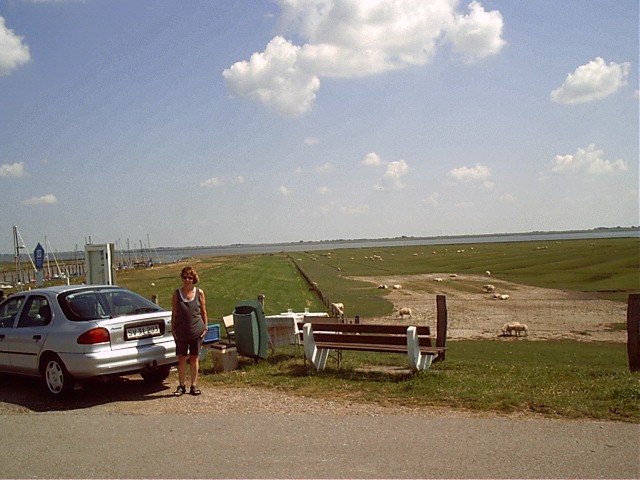
Sheep abound on the sloping dikes:
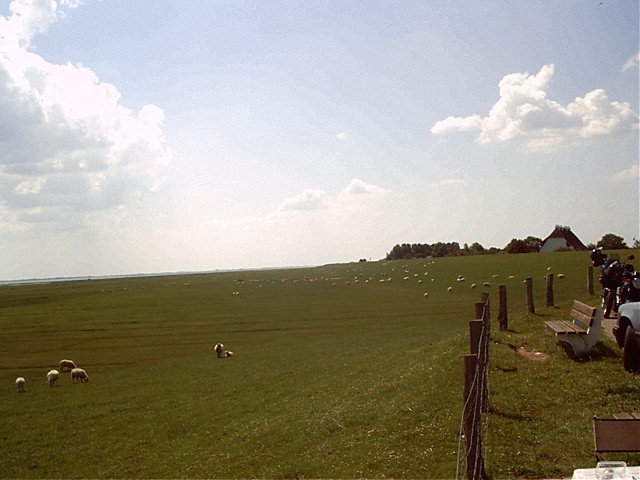
We and the sheep enjoyed the endless row of incoming freight carriers on "die Elbe" (the river Elb), the waterway to Hamburg:
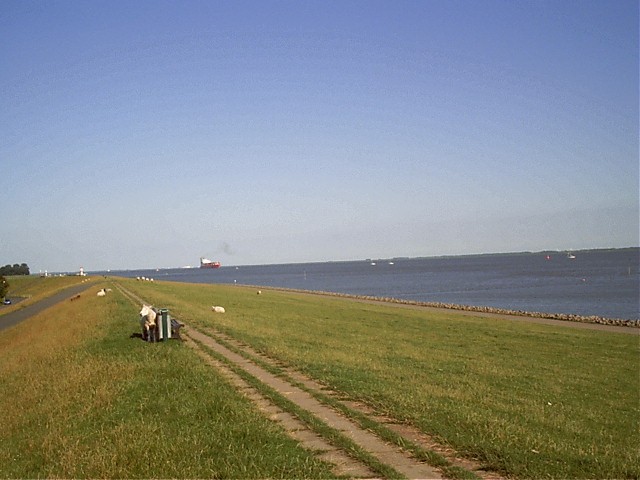
Beautiful mansions secure behind the dike (NB see also emigrant photo further below):
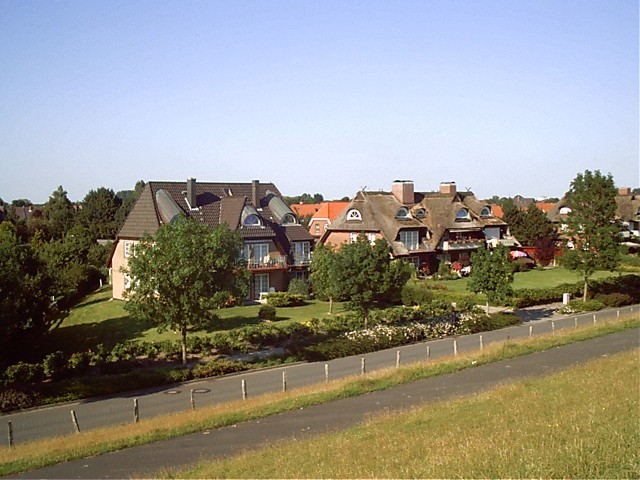
Crossing the Elb on one the many ferries that link what the river parts:
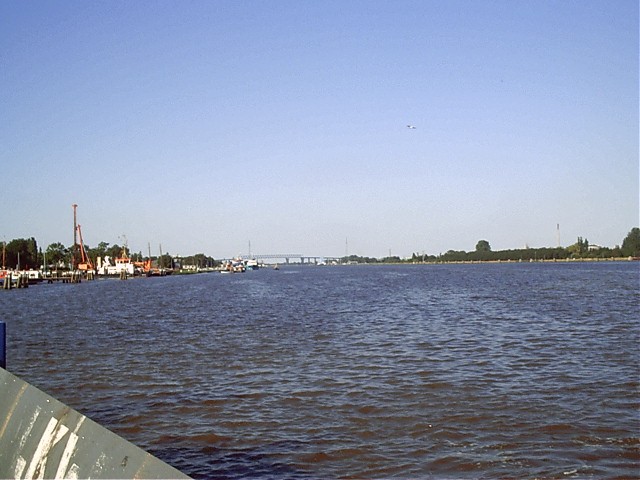
Traffic lanes on the water:
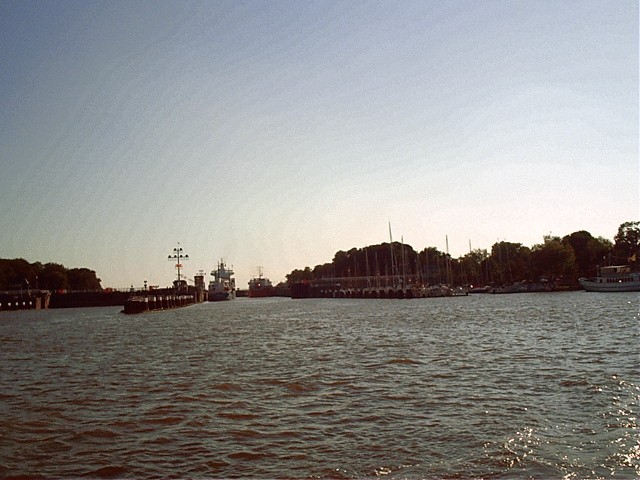
Setting up the table for a late dinner on the dike near Otterndorf (village of otters) in Niedersachsen:

After dinner, sunset on the dike:
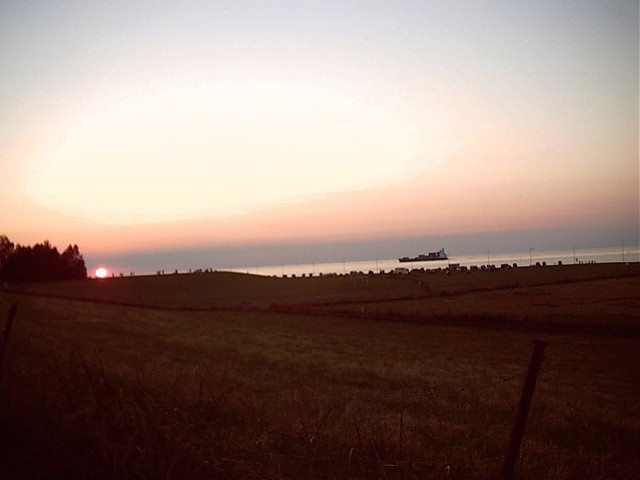
Otterndorf - a very nice hotel with an extra bedroom upstairs:
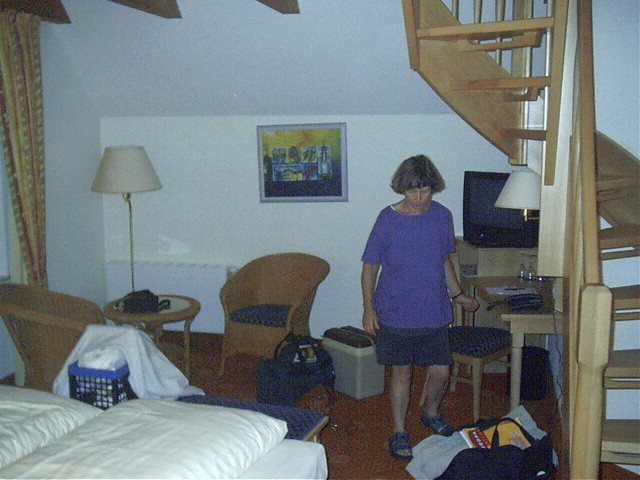
One of the many streets with old houses in Otterndorf:
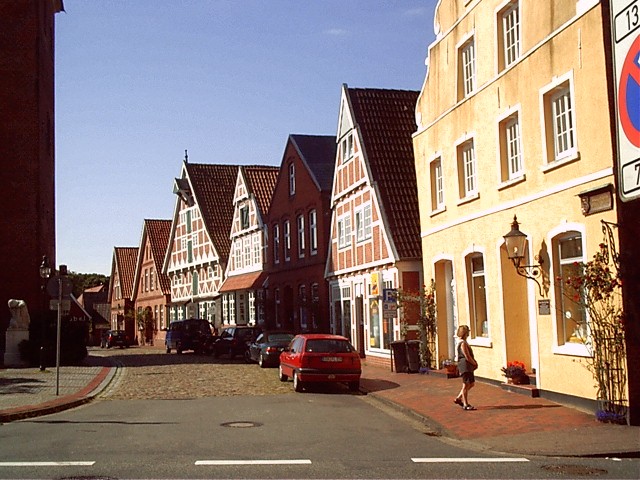
Sign on the corner of the first house says "Himmelreich" (street name for "Heaven"):
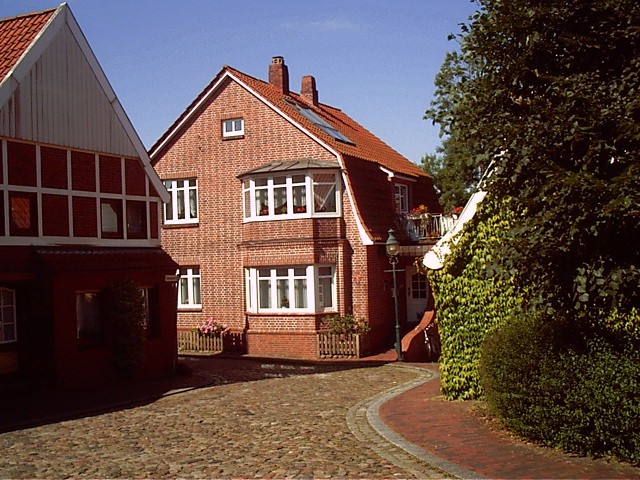
The old town hall in Otterndorf:
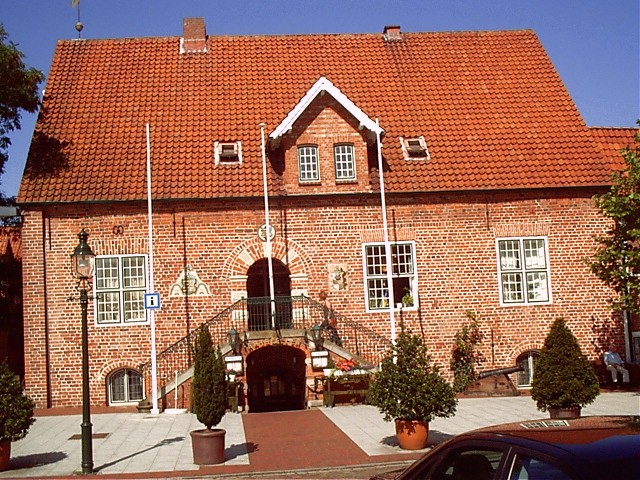
View of main street - town hall on the right:
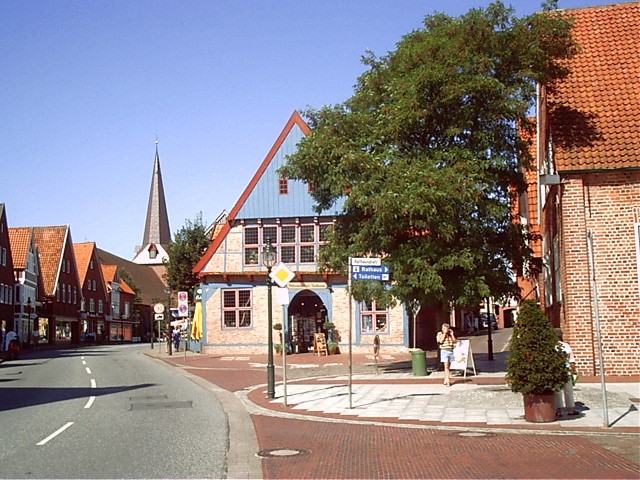
Cuxhaven serves as an advanced sea port of Hamburg: ice free and without the bars and banks that make the Elb a dangerous waterway for the big ships. The ownership goes back to the 1200s when Hamburg was a major player in the Hanseatic League of merchant cities
Below: the old Elbe lightship in the Cuxhaven marina. New fashionable districts grow up near the waterfront in what used to be condemned housing:
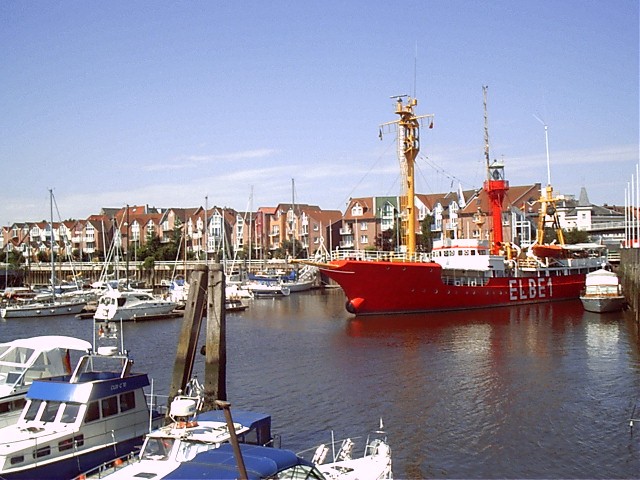
Cuxhaven was also the shipping port for the 14 million German emigrants to the USA - view of the old emigration central HAPAG:
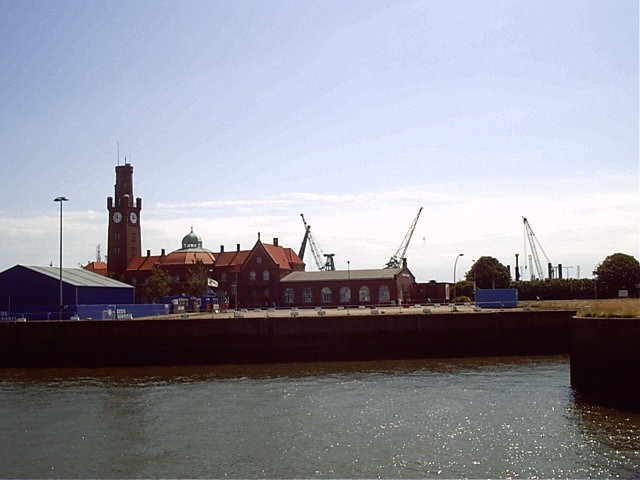
The old HAPAG (Hamburg Paket Gesellschaft) 1st class waiting room, recently restored:
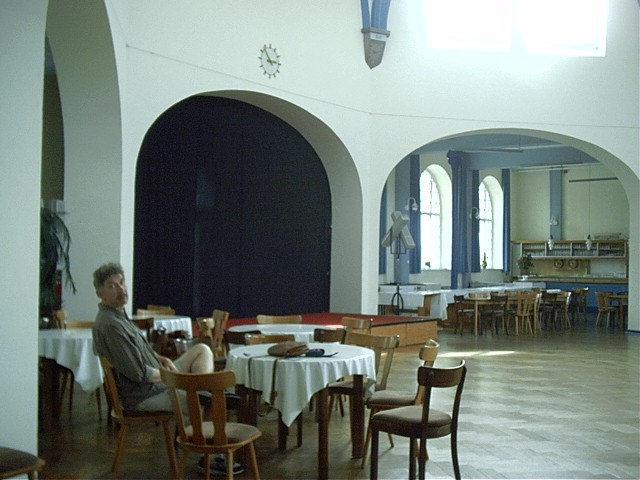
A little nicer than Ellis Island, but still a sign of mass transportation on a grand scale - behind the gates emigrants would line up in front of the counter according to the initial letters of their last names. The passenger ships were Titanic in size with a total of more than 2,500 passengers and a passenger-crew ratio of 1:1 - a total of 4,500 people (not counting the stowaways and the 3rd class deck passengers) . We wondered what such a huge ship would bring back on its return from the US, equipped as it was to passengers (cabins) and not cargo - the crew still had to eat.
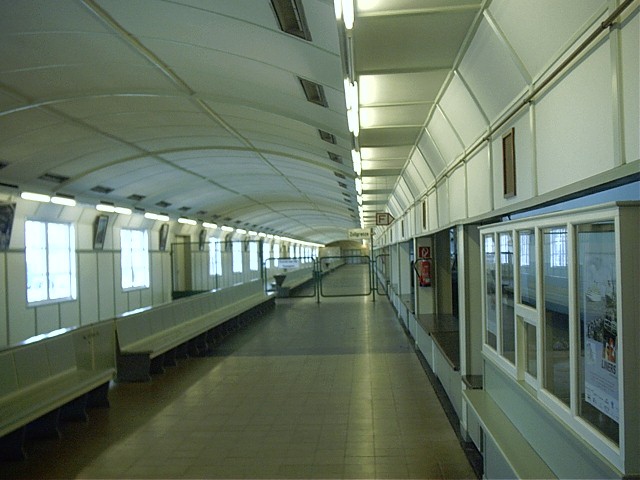
In the old building was a small exhibition of typical suicases and small chests packed with emigrant belongings:
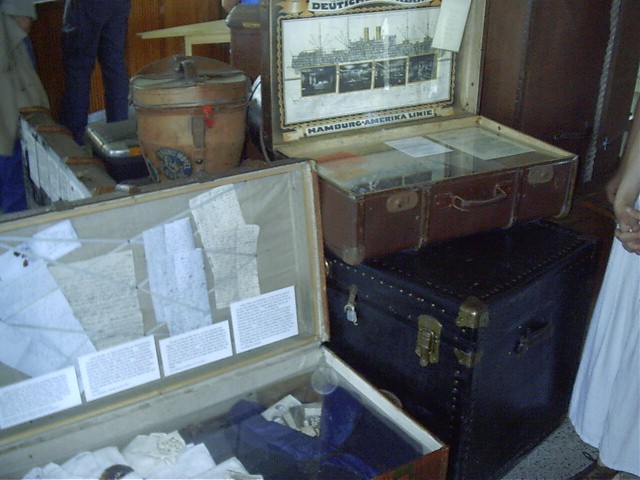
Top: A photo of what they left (compare the style of the houses to the ones in Otterndorf) with inserted letters in pidgeon German; most emigrants were illiterates and didn't know how to write German.
Bottom: the family's first dirt house in Indiana:
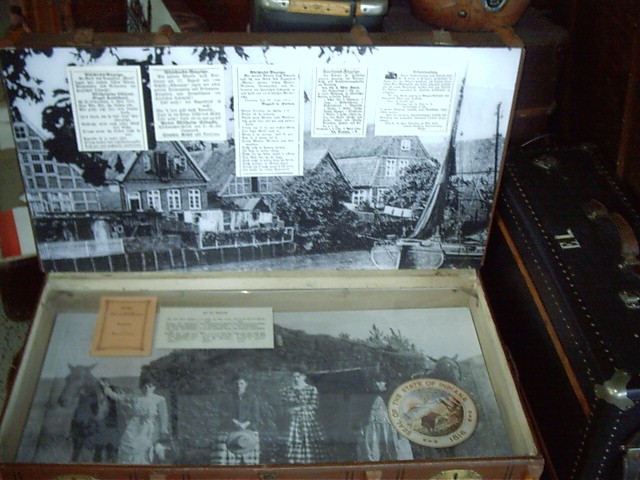
The thatched farmhouse they left (below the dike):
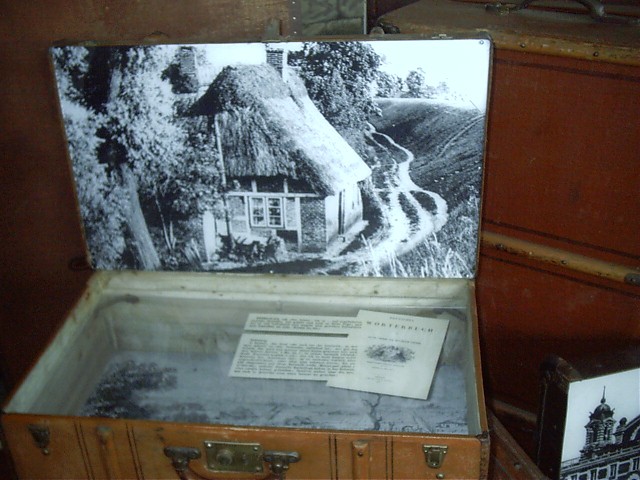
For a long time German was competing with English as the language of the US. The "Sprachführer" top left is a small dictionary with useful expressions in English. There was a time when more people spoke German in New York City than in Berlin:
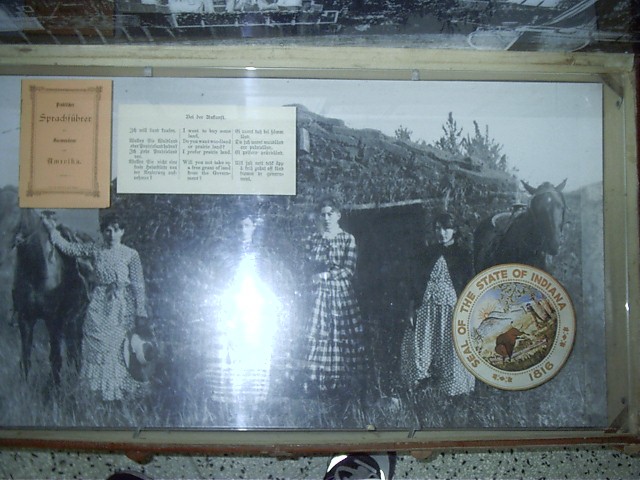
Crossing the river Weser farther west (looking back at Bremerhaven):
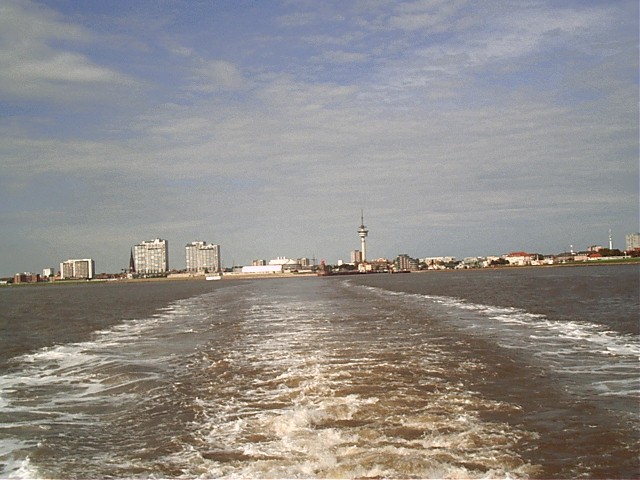
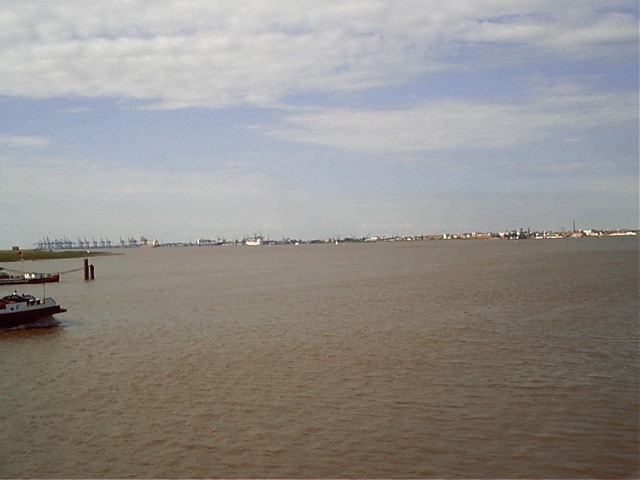
Varel: one of the many bathing resorts on the coast:

Same an hour later - the low tide has set in:
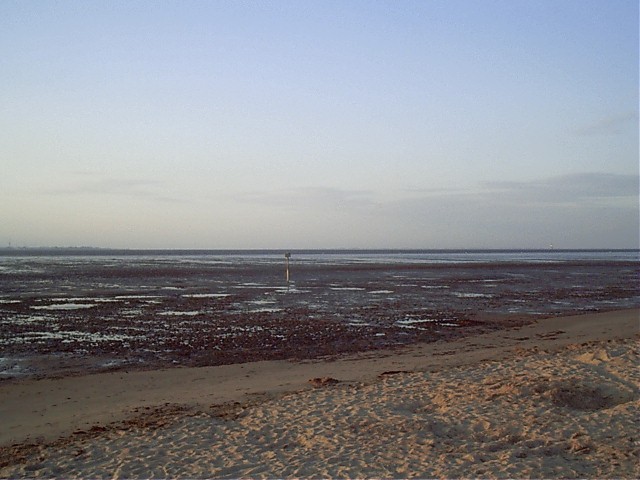
Sunset over the low tide at Varel:

Modest hotel room in Varel:
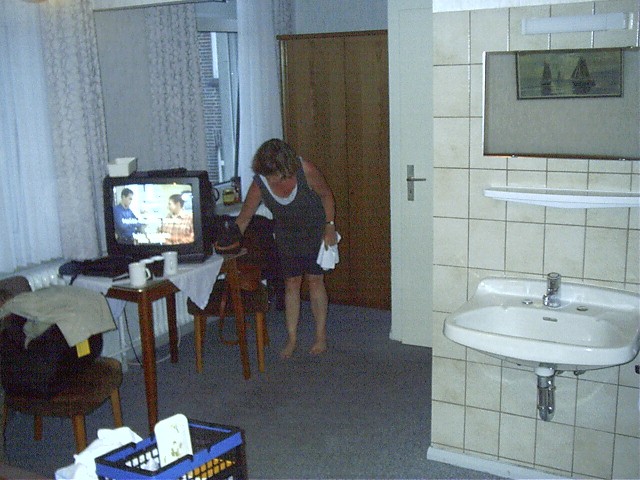
Going back across the Elb at low tide:
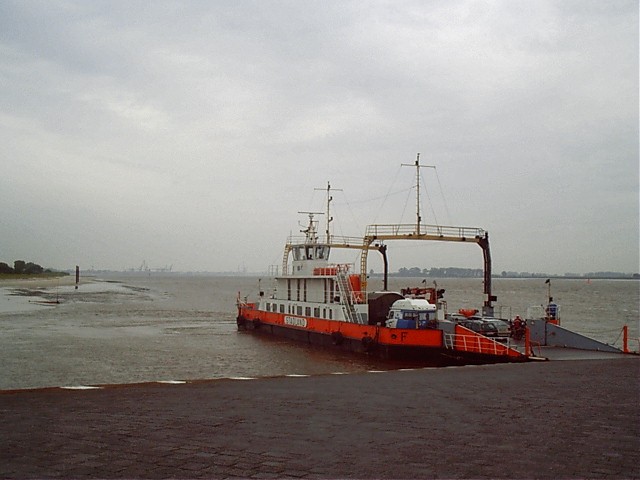
The Elb at low tide:
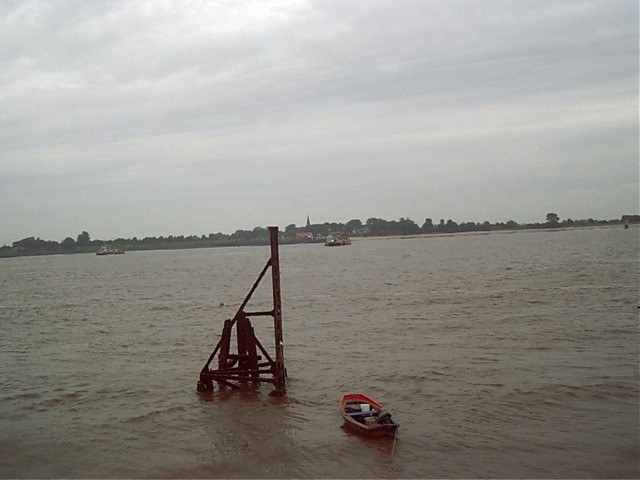
Another view of the Elbe crossing between banks of sand:
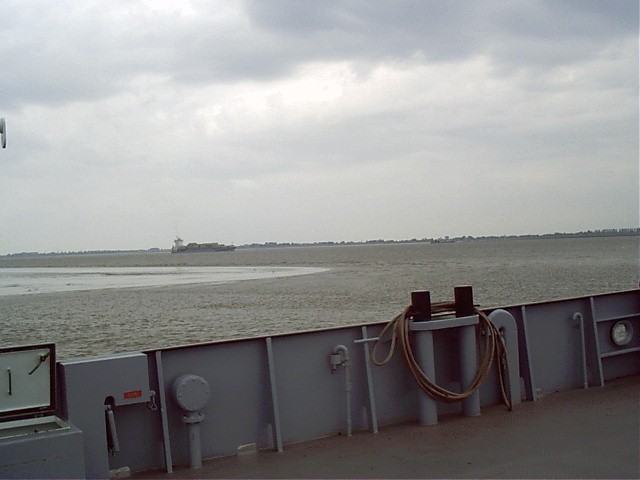
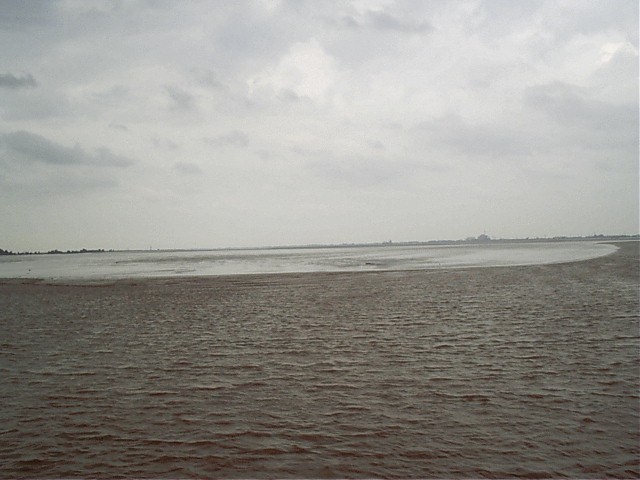
River Elbe - reefs and sand banks

On the last day of our trip the rains started, the rains that soon covered most of Europe, in many places with resulting flooding.
July 2002
Erik Moldrup